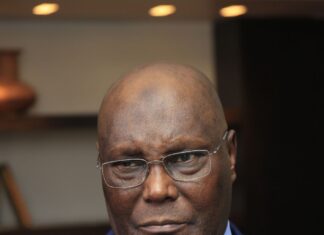Setting is the place and time in which a story takes place. It also includes the mood or atmosphere of the story. Place, Time and Mood/Atmosphere are the three major components of Setting.
Place is where fictitious characters live and move. Time is of course the time when a story takes place. This can be the hour, an era, a particulate year, month, week or day, including season: Christmas, Easter, New Yam Festival in Igbo land, eastern Nigeria, Argungu Fishing Festival in Kebbi state, northern Nigeria, at Moon time, Breakfast time, at dinner time, etc. Mood or Atmosphere is about the feel, the ambiance of a story.
Setting includes the things characters in a story use: cars, necklace, hair ribbon, soft drink, beer, etc. Weather, smells, sounds, animals and all the objects which are important in a story, whether they are natural or artificial, come under the setting of a story.
Edgar V. Roberts and Henry E. Jacobs put it this way in their book, Literature: Introduction to Reading and Writing: “The setting of a work is the total of references to physical and temporal objects and artifacts.”
Natural objects
Natural setting, of course comes from nature, the environment: the hills and the flowers, the clouds and the sun, the moon, the stars; lakes, rivers, forests. The environment or nature is a great tool in the hands of a wordsmith who employs it to shape fictitious character’s moods, circumstances, situations, deliberations, decisions as the characters try to resolve conflicts or as authors delineate fictitious characters’ circumstances.
Artificial or Manufactured Setting
These include possessions like houses, cars, clothes, even handbags and hair ribbons. A grown woman who’s fond of ribbons already tells a reader that a child is trapped in that grown body – this character is psychologically stunted in growth. A Pentecostal pastor who has tattoos and holes in his ears or still wears earrings, these objects tell a reader the background of the pastor – that is where the Lord saved him from, a lifestyle of tattoos, earrings, longhair and maybe alcohol or substance abuse.
If you’re reading a book and get to a scene and it describes an old building with paints peeling, smelly gutter, broken windows, splintered doors with no handles or knobs, overgrown grass and littered grounds, etc., the reader already forms an opinion – the building is either abandoned or the people there live in abject poverty.
On the other hand, think of meeting a character in a room with lit chandeliers, exotic chairs, real flowers in big vases, drinking sparkling wine in sparkling glasses? Even before you read what the character is wearing, you would have concluded that this is a wealthy character in wealthy circumstances.
Artificial setting is that which is made up by a writer to convey messages. A good reader will read meaning into every type of setting he/she meets in a work of art.
In Guy de Maupassant’s “The Necklace,” a cheap necklace was a major setting. Remember that setting also deals with objects characters in work of art use. In “The Necklace,” the loss of a cheap borrowed necklace is a major conflict bringing all manner of complications.
Objects like whisky, gin, etc., bottles hidden in different parts of a house within reach of a character that shares a house with a spouse, tells a reader straight away that the complication in the story may be alcohol abuse.
Writers can emphasise or minimise setting. If a character has one bottle of dry gin which he never brings out except when he has company, that character has no issue with alcohol. Take for instance, in Chimamanda Ngozi Adiche’s Purple Hibiscus; tea is part of the setting. The author employs this object in the murder of Kambili’s father.
Writers use setting to make their works believable. In Akachi Adimora Ezeigbo’s Roses and Bullets, she uses the setting of relief camps, afia attack, war-front, etc., to make the story believable. Her settings draw readers into wartime and give out the sense of experience, even though the reader may never have been in a wartime situation.
Charles Dickens’ setting in Great Expectation of Miss Havisham’s house (Satis House) with the wall clock having stopped at a certain time, the cake standing with moulds over it, the cobwebs, the wedding gown which had become old and decaying, all give a statement that this woman, Miss Havisham has stopped living, life has come to a standstill for her. Why? – Because someone jilted her on her wedding day. The reader doesn’t need the details, just taking in the scene in Miss Havisham’s living room, tells the story. Dickens makes a statement with this setting.
Setting also deals with character, organization, atmosphere, irony, etc.
In Chinua Achebe’s Things Fall Apart, we see intersect of setting and character. Okonkwo, the protagonist, is a short tempered man who finds it difficult to get out words fast enough when he is angry, and he ends up using his fists. This character trait is described in the time of peace in the land, when his clan is still valued and native laws and customs are held in high esteem. By the time the story gets to the invasion of the white man, Okonkwo’s character trait which is volatile intersects with the prevalent circumstance in the land and there was an explosion!
In Iris Murdoch’s The Unicorn, mood is used to a great effect. The ambience of the story starting from the opening page is sinister, ominous, and eerie. This mood permeates throughout the novel.
Irony in Setting
There are about four types of irony in Literature: verbal, dramatic, situational and cosmic.
Dramatic irony is when the audience is more aware of what’s going on in a story than the character. For example, the audience already knows that king Odewole is the murderer he seeks in The Gods Are Not To Blame. The particular setting in the palace where all the drama of sending for the Ifa priest, sending for the messenger who limps, and asking the chiefs and his wife if they know who he is, is a setting in dramatic irony.
Situational irony is the difference in what is expected to happen and what happens. Take for instance, in Horace Walpole’s The Castle of Otranto, the author presents a setting of situational irony when Conrad, the son of Manfred, Prince of Otranto (or the usurper), was crushed to death on the morning of his wedding, and his father, Manfred decides to take his place and marry his bride! At a wedding, no matter what happens, you wouldn’t expect the father of the groom to want to take the place of the groom!
In Maupassant’s The Necklace, there is situational irony or irony of situation in the story as both Mathilde and the audience do not expect the necklace to be cheap and worthless for which Mathilde labours to work and replace a long time.
Cosmic irony is also known as irony of fate. And this is seen in the setting and story of Ola Rotimi’s The Gods Are Not To Blame and Horace Walpole’s The Castle of Otranto. It appears in the two stories that both king Odewole and Manfred, Prince of Otranto, are fated to end the way they did. This irony is a sub-type of situational irony, something or a situation a character cannot run away from! But there must be in the situational irony, a cosmic interference for it to be called cosmic.
Verbal irony of course is saying one thing when you mean another. Saying, “What a wonderful person you are!” when you mean, “What a terrible person you are!”
So, Setting is a major component in the elements of Literature. Pay attention to these elements when you read a story, then employ them to tell your own story.
I recommend Akachi Adimora Ezeigbo’s Roses and Bullets for Setting (geographical), Iris Murdoch’s The Unicorn for Setting (Mood/Atmosphere), and Ola Rotimi’s The God’s Are Not To Blame for Setting (Time).












